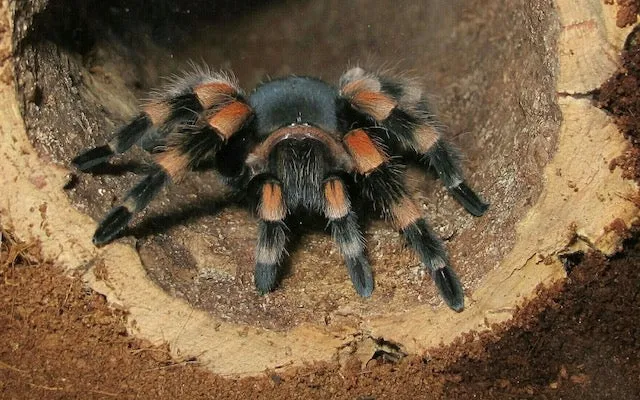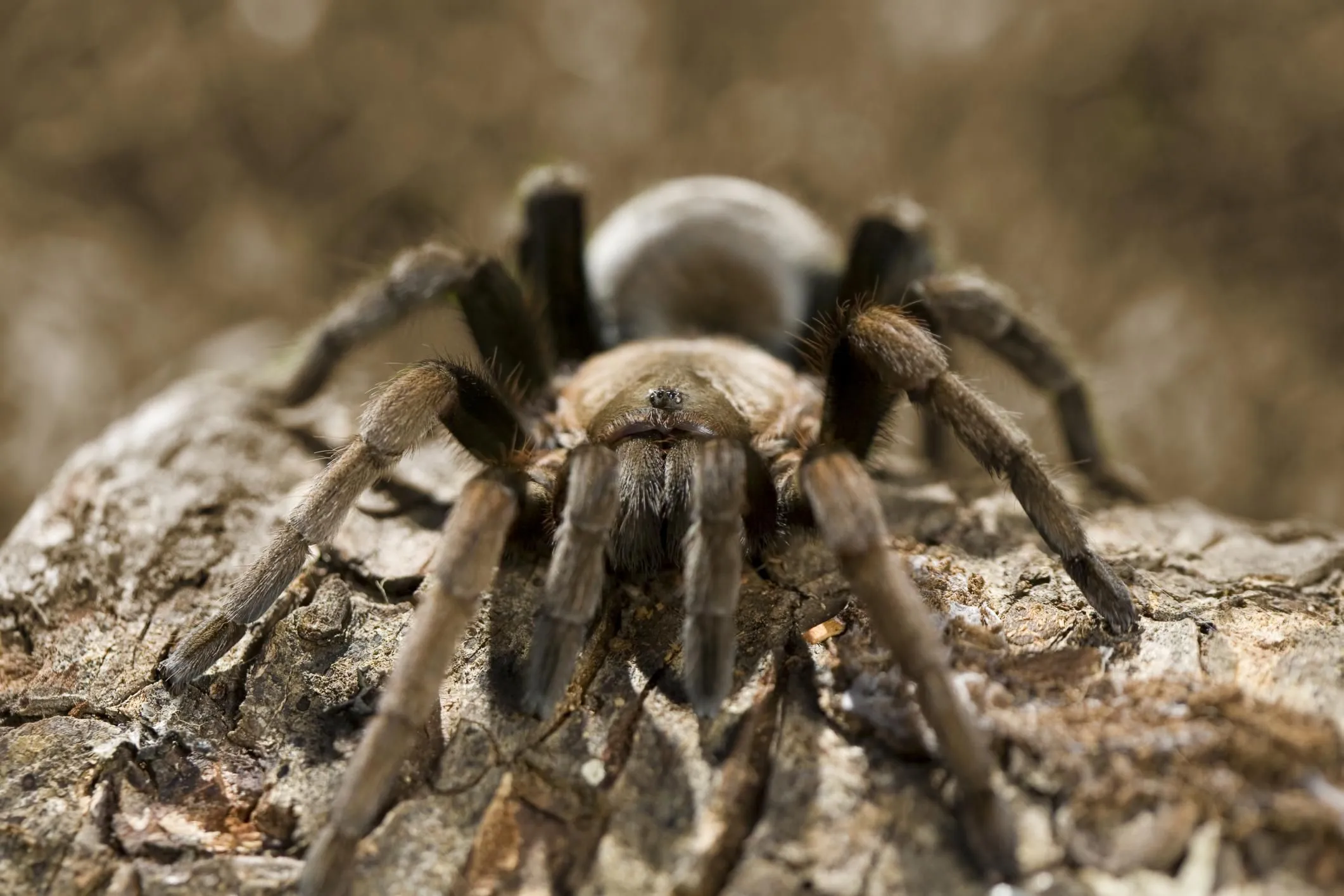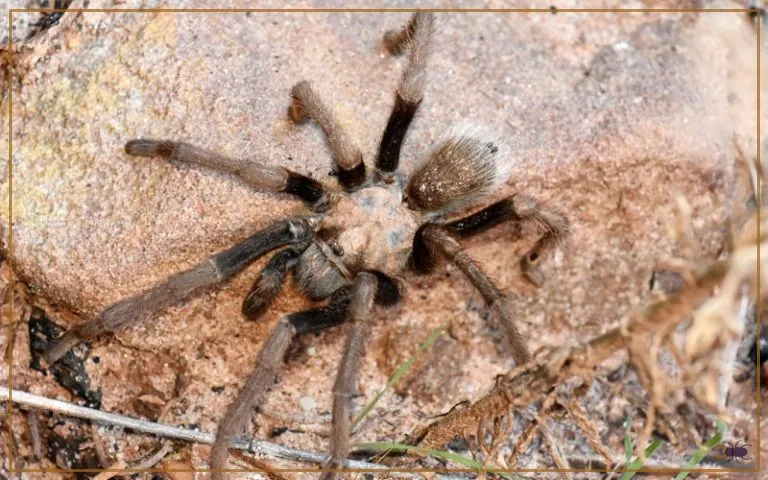Understanding Tarantulas and Their Behavior
Tarantulas, despite their imposing size and hairy appearance, are often misunderstood creatures. Understanding their behavior is the first step in realizing that they are generally not dangerous to humans. These spiders are typically docile and prefer to avoid confrontation. Their actions are primarily driven by instinct, and they are not inherently aggressive. Learning about their natural tendencies and how they interact with their environment can significantly alter perceptions and dispel common fears. This knowledge is crucial for anyone considering owning a tarantula or simply wanting to better understand these fascinating arachnids.
Debunking Common Myths About Tarantulas
Many misconceptions surround tarantulas, often fueled by movies and sensationalized media. These myths contribute to the unwarranted fear people have of these creatures. It’s essential to address and debunk these myths to foster a more accurate understanding of tarantula behavior and safety. By separating fact from fiction, we can appreciate tarantulas for what they are: intriguing animals with unique characteristics, not the terrifying monsters they are sometimes portrayed as.
Myth 1 They Are Highly Venomous

One of the most widespread myths is that tarantulas possess highly potent venom, capable of causing severe harm or even death to humans. The reality is far different. While tarantulas do have venom, it is generally not considered dangerous to humans. The effects of a tarantula bite are often compared to a bee sting, causing localized pain, redness, and swelling. Serious reactions are rare, and fatalities are virtually unheard of. This misconception highlights the importance of distinguishing between sensationalized portrayals and scientific facts.
Myth 2 Tarantulas Are Aggressive
Another common myth is that tarantulas are aggressive and actively seek out opportunities to bite humans. In truth, tarantulas are typically timid creatures that prefer to avoid conflict. Their primary defense mechanisms are to flee, flick urticating hairs (in some species), or adopt a threat posture, but biting is usually a last resort. A tarantula might bite if it feels threatened, such as when it’s mishandled or feels trapped. Their seemingly intimidating appearance often leads people to perceive them as aggressive, but this is often not the case.
Myth 3 Tarantulas Are Always Ready to Bite
The misconception that tarantulas are always ready to bite contributes significantly to the fear surrounding them. The truth is that tarantulas only bite when provoked or feel threatened. They are not naturally inclined to attack humans. Bites usually occur due to improper handling, accidental contact, or when the spider feels trapped. Understanding that a tarantula’s bite is a defensive reaction, not an aggressive one, helps to put their behavior into perspective and dispel the myth of a constant threat.
Why Tarantulas Are Generally Not Dangerous

Several factors contribute to the fact that tarantulas are generally not dangerous to humans. Understanding these reasons provides a clearer picture of their true nature and reinforces their safety. From the mildness of their venom to their preference for avoiding conflict, these characteristics set the stage for a much safer interaction than many people realize. This knowledge can significantly reduce the fear and apprehension associated with these creatures.
Their Venom is Mild
As mentioned earlier, the venom of most tarantula species is not highly potent. It’s usually comparable to a bee sting, causing localized pain, redness, and swelling. Serious reactions are rare, and life-threatening situations are exceptional. The composition of the venom is not designed to affect humans severely. This low toxicity is a primary reason why tarantulas are not considered dangerous. Research has also shown that many species have even milder venom than previously thought, further reassuring those interested in these spiders.
They Prefer to Flee
Tarantulas are more likely to run away and hide than confront a perceived threat. Their first instinct is to escape if they feel threatened. They are not predators looking for a fight. When faced with a potentially dangerous situation, they retreat to a safe place, such as their burrow or a hiding spot. This behavior is a significant factor in their relative safety. Understanding that they prefer to flee demonstrates how little they are interested in engaging in conflict.
Their Bites Are Rare

Tarantulas rarely bite humans. Bites typically occur due to mishandling, accidental contact, or when a tarantula feels trapped or threatened. In most cases, bites are preventable through responsible handling and providing a safe environment. The rarity of bites reinforces the notion that tarantulas are not dangerous, as the chances of a bite occurring are relatively low, particularly when appropriate precautions are taken. Proper care and handling techniques are critical to minimize the chances of a bite.
How to Handle Tarantulas Safely
While tarantulas are generally not dangerous, it’s essential to handle them responsibly to ensure both your safety and the well-being of the spider. Proper handling involves preparation, technique, and understanding the spider’s behavior. Safe handling minimizes the risk of bites and helps foster a positive experience for both the handler and the tarantula. Following these guidelines ensures a safe and enjoyable interaction with these fascinating creatures.
Preparing Your Environment
Before handling a tarantula, it is important to prepare the environment to minimize any risk of harm to the spider and yourself. This includes ensuring the room is secure, removing any hazards, and having the appropriate tools. Proper preparation allows you to have more control and minimize stress for the tarantula. Pre-planning creates a safer and more manageable environment.
Creating a Safe Habitat

The environment where you handle the tarantula should be secure. Close all windows and doors to prevent escape. The room should be free of clutter and potential hazards. A clear, open space reduces the risk of the tarantula getting lost or injured. If handling near the enclosure, ensure the lid is secure when the spider is out. Preparing the environment eliminates distractions and potential dangers.
Providing Proper Handling Tools
While some experienced keepers handle tarantulas with bare hands, it is often wise to use tools. Soft-bristled paintbrushes can be used to gently coax a tarantula from its enclosure or to guide it. Long-handled tweezers can also be useful for moving the tarantula, though this should be done carefully to avoid injury. Having these tools available helps minimize direct contact, reducing the risk of bites and making the handling process more manageable.
Handling Techniques
The handling technique you use directly influences your safety and the spider’s comfort. A gentle, patient approach is essential. Avoid sudden movements and respect the spider’s space. Handling should be brief and performed in a controlled environment. By using the right techniques, you can create a positive experience for both the handler and the tarantula.
Gentle Approach

When handling a tarantula, always approach it gently. Avoid grabbing or startling the spider. Use slow, deliberate movements. If the spider is in its enclosure, gently coax it out using a soft brush or by opening the enclosure and allowing the spider to walk onto your hand. Speak softly to the spider, as the vibrations in the air could reassure the spider. This approach allows the tarantula to feel safe and in control, reducing stress and the likelihood of defensive behavior.
Avoiding Sudden Movements
Avoid sudden movements or loud noises while handling a tarantula. These actions can startle the spider and cause it to react defensively. Move slowly and deliberately, and always be aware of the spider’s body language. Quick movements can be perceived as threats, even if unintentional. A calm and steady approach is more likely to ensure the tarantula remains calm as well. Be mindful of how your actions could be interpreted by the spider.
What to Do If Bitten
Although tarantula bites are rare, it is important to be prepared for any eventuality. Knowing what to do if bitten ensures a proper response and helps manage any discomfort. Quick and appropriate actions can help limit the effects of the bite and promote quick recovery. Being prepared also provides a sense of security when handling the spiders.
Immediate Steps

If bitten by a tarantula, the first step is to remain calm. Wash the bite area thoroughly with soap and water. Apply a cold compress to reduce swelling and pain. Monitor the bite for any signs of allergic reaction or infection. In most cases, the symptoms are mild and will resolve on their own. By following these immediate steps, you can address the bite and minimize any discomfort.
Monitoring for Symptoms
After a tarantula bite, it is important to monitor for any adverse reactions. Watch for signs of an allergic reaction, such as difficulty breathing, swelling of the throat, or hives. Also, watch for any signs of infection, such as increased pain, redness, or pus. If you experience any severe symptoms, seek medical attention immediately. Early detection and treatment are important to avoid any complications.
Long-Term Safety and Care
Ensuring long-term safety and responsible care is essential for the continued enjoyment of tarantulas as pets. This involves providing a suitable habitat, handling them carefully, and understanding their needs. Following these steps can promote a safe environment for both the tarantula and its keeper. Long-term care is a testament to the responsibility required when owning these remarkable creatures.
By understanding their behavior, debunking common myths, and practicing safe handling techniques, we can appreciate the captivating nature of tarantulas without undue fear. These spiders, when treated with respect and handled responsibly, pose little danger to humans. Owning a tarantula can be a rewarding experience, and with the right approach, it can also be a safe one.
